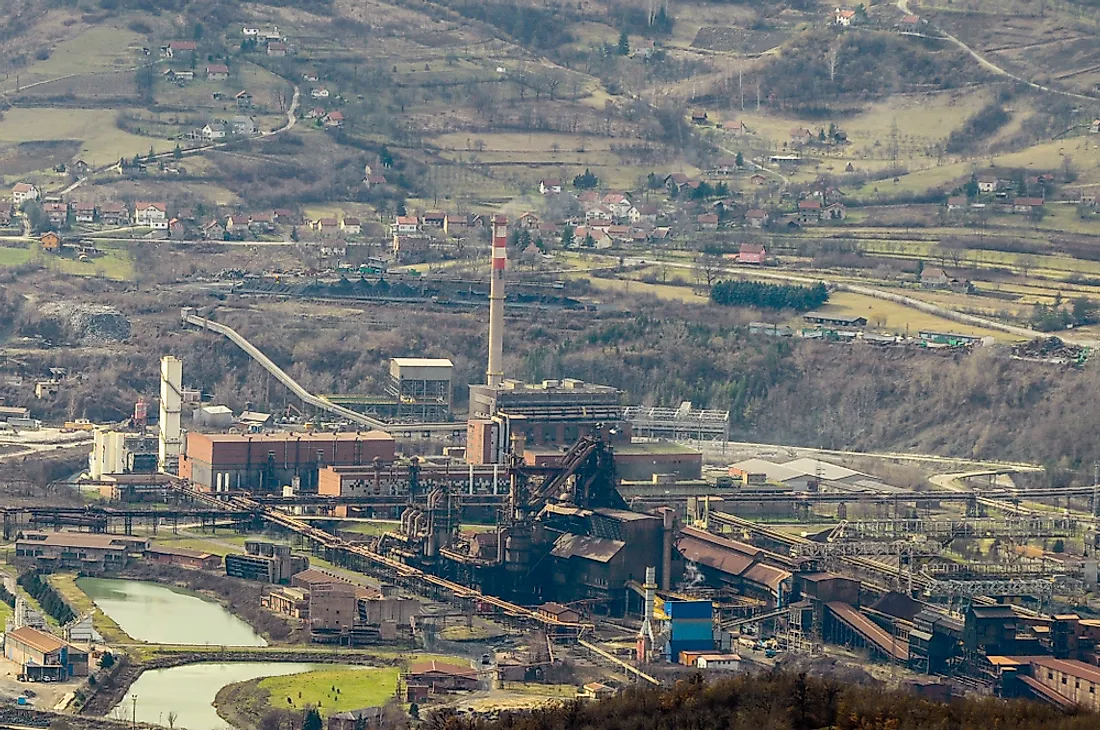What Are The Biggest Industries In Bosnia and Herzegovina?

Bosnia and Herzegovina, informally known as Bosnia, is located in Southeastern Europe within the Balkan Peninsula. It is almost a landlocked country and has a narrow coast along the Adriatic Sea. Bosnia borders Croatia to the south, east and north, Serbia to the west, and Montenegro to the northwest. The country has a rich cultural, social, and political history that dates back to the Neolithic age. It evolved from Banate of Bosnia into a kingdom and an empire and back to a kingdom before becoming independent. All these eras contributed to the country’s current socio-economic and political outlook.
Bosnia’s economy suffered about US$ 260 billion in material damage during the Bosnia War of 1992 to 1995. The country is generally an upper middle-income country which has greatly recovered from the effects of the war. Today, Bosnia and Herzegovina have embarked new growth models despite the global financial crisis. However, the country faces several economic challenges, key among them including the imbalance of its economic model, skewed public policies towards the public rather than the private sector, and negative trade imbalance. However, one of the legacies of the previous era was the development of a strong metal industry which continues to play an integral role in the development of Bosnia’s economy. Currently, Bosnia ranks highly in terms of human development and its economy is mainly dominated by industries, agriculture, tourism, and service sector. Here are the country’s biggest industries and their contribution to the economy:
Mining
Despite its relatively small size, Bosnia has a significant amount of mineral resources including iron ore, copper, lead, bauxite, zinc, and lignite. The metal processing sector which included ferrous and non-ferrous metals is the most valuable segment of the mining industry. The mineral industry is the largest of goods by value and has registered positive growth in recent years. The metal-processing sector is dominated by aluminum, iron, zinc, and steel while the extraction sector is dominated by bauxite, lead, copper, zinc, and steel. Mineral fuel produced in the country includes lignite, coke, and coal, with coal accounting for the largest domestic energy production. Mining accounted for 2% of Bosnia’s GDP in 2014 with the mining of coal and lignite accounting for 68% of the mining industry and mining of metal accounting for 21%. Most of the leading production companies in the mining industry are privately owned with the exception of only two coal-power generating companies.
Metal
The metal industry is one of the subsectors of the mining sector. The metal processing sector has traditionally been one of the strongest sectors in the country, offering competitive products for export. The metal industry evolved from craft workshops that were meant to help in the maintenance of the coal mine equipment. The growth of the industry has also been boosted by the country’s richness in natural resources, particularly metals such as iron ore, lead, bauxite, zinc, and copper. The metal sector has been Bosnia’s strongest exporter for the last ten years and is also one of the most important industrial sectors in the whole of the region. According to the economic strategy set by the government, the metal industry is a strategic industry with a competitive advantage and able to attract both local and foreign investment.
Agriculture
Almost half of the population of Bosnia and Herzegovina live in rural areas. Therefore, agriculture is the backbone of the rural economy and generates significant value for the country’s economy. However, agriculture is a vulnerable economic activity given the country’s vulnerability to climate change. The share of this sector to the GDP is 7% (2013) and employs about 20% of the total workforce. Although agriculture is mainly characterized by small-scale farming, Bosnia is traditionally a food exporter. Cereal production dominates the sector with maize as the main crop, accounting for 60% of all the cereals produced. Other major farm products include wheat, apple, fruits, potatoes, and vegetable. Despite the favorable conditions, agricultural production is facing several challenges including adverse weather conditions, poor quality of inputs, lack of farm investment, and poor farming practices. Lack of adequate access to the market has also reduced the motivation of farmers to specialize and improve their production.
Tourism
Apart from the industrial and agricultural sector, tourism is the next important contributor to the economy of Bosnia and Herzegovina. This sector has grown by a double-digit rate in recent years and is on its way to full recovery from the past conflicts. Tourist arrivals grew by 24% annually between 1995 and 2000. According to the World Bank’s predictions, Bosnia will have the world’s 3rd highest tourism growth rate between 1995 and 2020.











